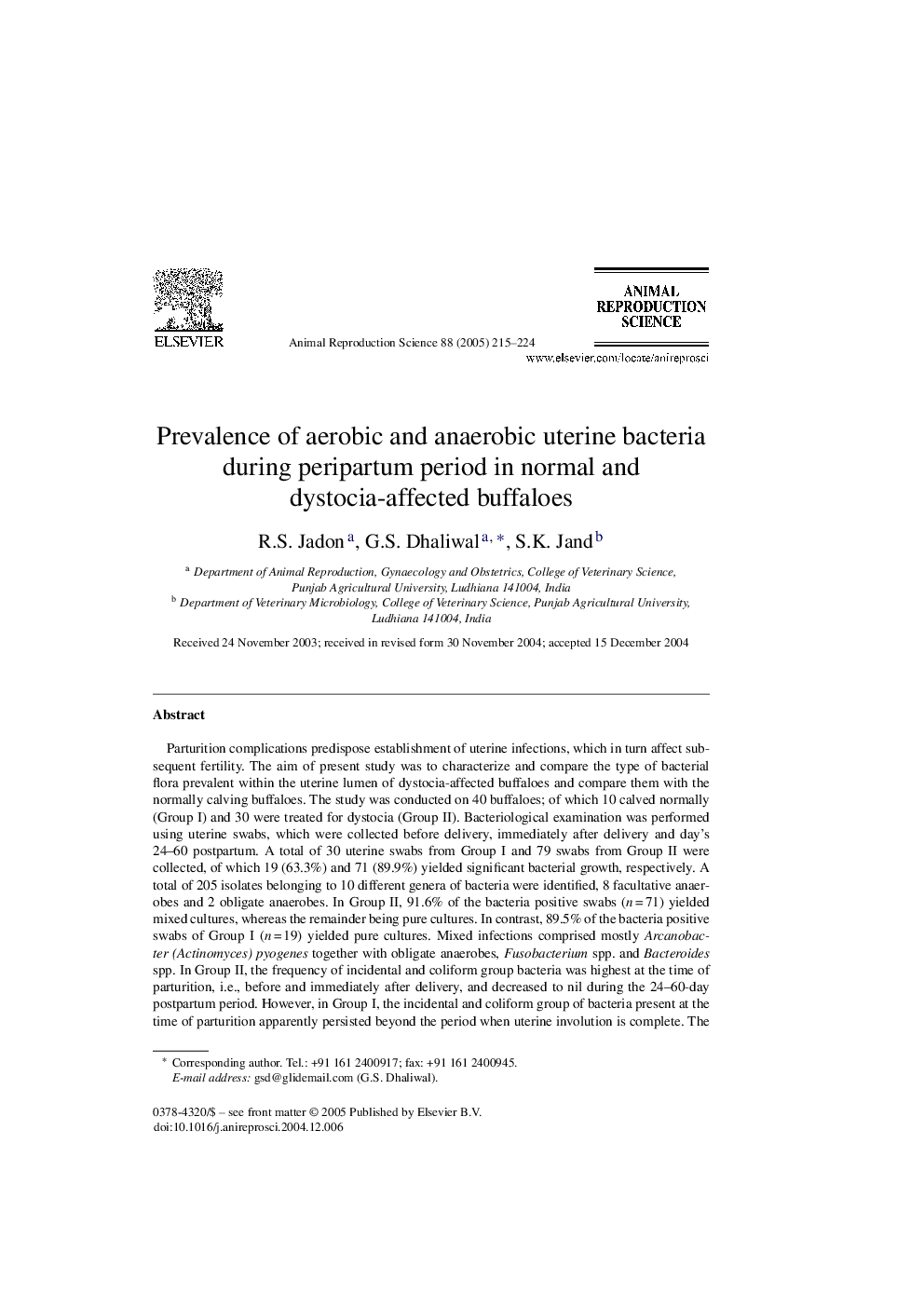| کد مقاله | کد نشریه | سال انتشار | مقاله انگلیسی | نسخه تمام متن |
|---|---|---|---|---|
| 9900268 | 1544837 | 2005 | 10 صفحه PDF | دانلود رایگان |
عنوان انگلیسی مقاله ISI
Prevalence of aerobic and anaerobic uterine bacteria during peripartum period in normal and dystocia-affected buffaloes
دانلود مقاله + سفارش ترجمه
دانلود مقاله ISI انگلیسی
رایگان برای ایرانیان
کلمات کلیدی
موضوعات مرتبط
علوم زیستی و بیوفناوری
علوم کشاورزی و بیولوژیک
علوم دامی و جانورشناسی
پیش نمایش صفحه اول مقاله

چکیده انگلیسی
Parturition complications predispose establishment of uterine infections, which in turn affect subsequent fertility. The aim of present study was to characterize and compare the type of bacterial flora prevalent within the uterine lumen of dystocia-affected buffaloes and compare them with the normally calving buffaloes. The study was conducted on 40 buffaloes; of which 10 calved normally (Group I) and 30 were treated for dystocia (Group II). Bacteriological examination was performed using uterine swabs, which were collected before delivery, immediately after delivery and day's 24-60 postpartum. A total of 30 uterine swabs from Group I and 79 swabs from Group II were collected, of which 19 (63.3%) and 71 (89.9%) yielded significant bacterial growth, respectively. A total of 205 isolates belonging to 10 different genera of bacteria were identified, 8 facultative anaerobes and 2 obligate anaerobes. In Group II, 91.6% of the bacteria positive swabs (n = 71) yielded mixed cultures, whereas the remainder being pure cultures. In contrast, 89.5% of the bacteria positive swabs of Group I (n = 19) yielded pure cultures. Mixed infections comprised mostly Arcanobacter (Actinomyces) pyogenes together with obligate anaerobes, Fusobacterium spp. and Bacteroides spp. In Group II, the frequency of incidental and coliform group bacteria was highest at the time of parturition, i.e., before and immediately after delivery, and decreased to nil during the 24-60-day postpartum period. However, in Group I, the incidental and coliform group of bacteria present at the time of parturition apparently persisted beyond the period when uterine involution is complete. The frequency of obligate anaerobes and A. pyogenes at the time of parturition was nil in the Group I while they predominated in dystocia-affected buffaloes (Group II). During the postpartum period of 24-60 days, the frequency of both obligate anaerobes and A. pyogenes increased significantly in Group II, whereas in Group I, only occasional isolates were obtained. To conclude, at the time of calving the prevalence of obligate anaerobes and A. pyogenes occurring in combination was highest in dystocia-affected buffaloes, and further increased in the postpartum period suggesting that these infections act synergistically.
ناشر
Database: Elsevier - ScienceDirect (ساینس دایرکت)
Journal: Animal Reproduction Science - Volume 88, Issues 3â4, September 2005, Pages 215-224
Journal: Animal Reproduction Science - Volume 88, Issues 3â4, September 2005, Pages 215-224
نویسندگان
R.S. Jadon, G.S. Dhaliwal, S.K. Jand,